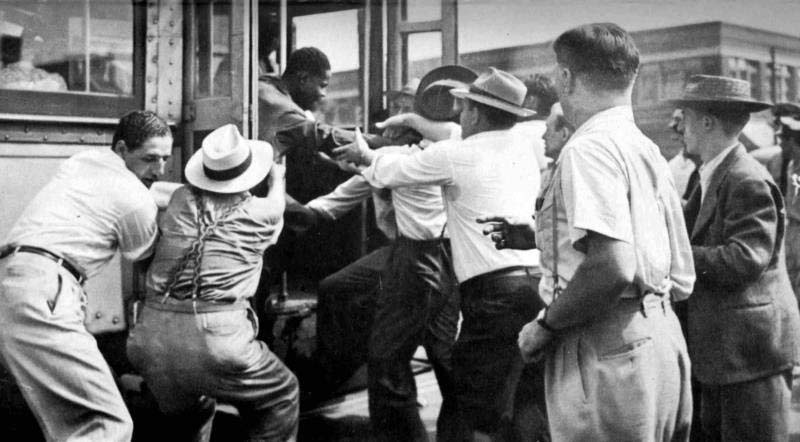Redlining is when lenders refuse financial services including denying mortgages, insurance, and loans based on a resident’s race or ethnicity. Redlining began in 1933 with FDR’s “the new deal”. When the federal housing administration subsidized builders to produce suburbs at a massive scale under the condition that these new suburbs were for whites only and could not be sold to African Americans which forced them into urban housing projects in poor inner-city neighborhoods. FHA then took it a step further by refusing to insure mortgages or give loans in or near African American neighborhoods. defending themselves by saying if African Americans bought homes in the suburbs the property of these homes would go down. The homeowner’s loan corporation came up with residential security maps which are maps sectioning off areas of the city into four categories based on the risk of defaulting on loans. The different colors on the maps indicated different levels in society: African Americans being “red.” The red area was designated for individuals who were “detrimental to society” and were foreign-born, aka negros.

Residential security maps were adopted by cities all over the country. Even though there was no evidence at the time to support that African Americans were more likely to default on their loans. Redlining was officially made illegal in 1968 with the Fair Housing Act, after over 30 years of extreme housing discrimination. In fact, after those 30 years, white households received 98% of all FHA loans, leaving only 2% for all minority groups combined. However, just because redlining was made illegal, doesn’t mean that all damage was done. The effects are still present today. Today the average African American accounts for just 60% of the income in white households. While redlining doesn’t account for all of that economic inequality, it definitely plays a role. It’s no secret that home ownership is a major way Americans mask wealth. In the 40s, 50s, and 60s, even African Americans that could afford to live in the suburbs were denied, meaning they didn’t get the benefit of the shared household appreciation. During the 60s those houses sold for twice the national average so by the time redlining was made illegal, those same African Americans could no longer afford to live in those suburban houses. Today, those same houses sell for an average of 6-8x the national average.

A 2020 study at the University of Wisconsin found that redlining not only reduced minority wealth but it also impacted their health and longevity resulting in a legacy of chronic illness and relative death. The average life expectancy was 3.6 years lower for those living in redlined areas, given that redlined areas were way more likely to be near industrial plants and without healthy drinking water. It also played a role in education. Schools are often funded by communities’ property tax so if you live in an area with lower property values, there’s less money going into the public school system in your area and without money, school quality declines drastically. Redlining was a dark spot in American history and significantly impacted the way of life for African Americans and its effects are still being felt today.


